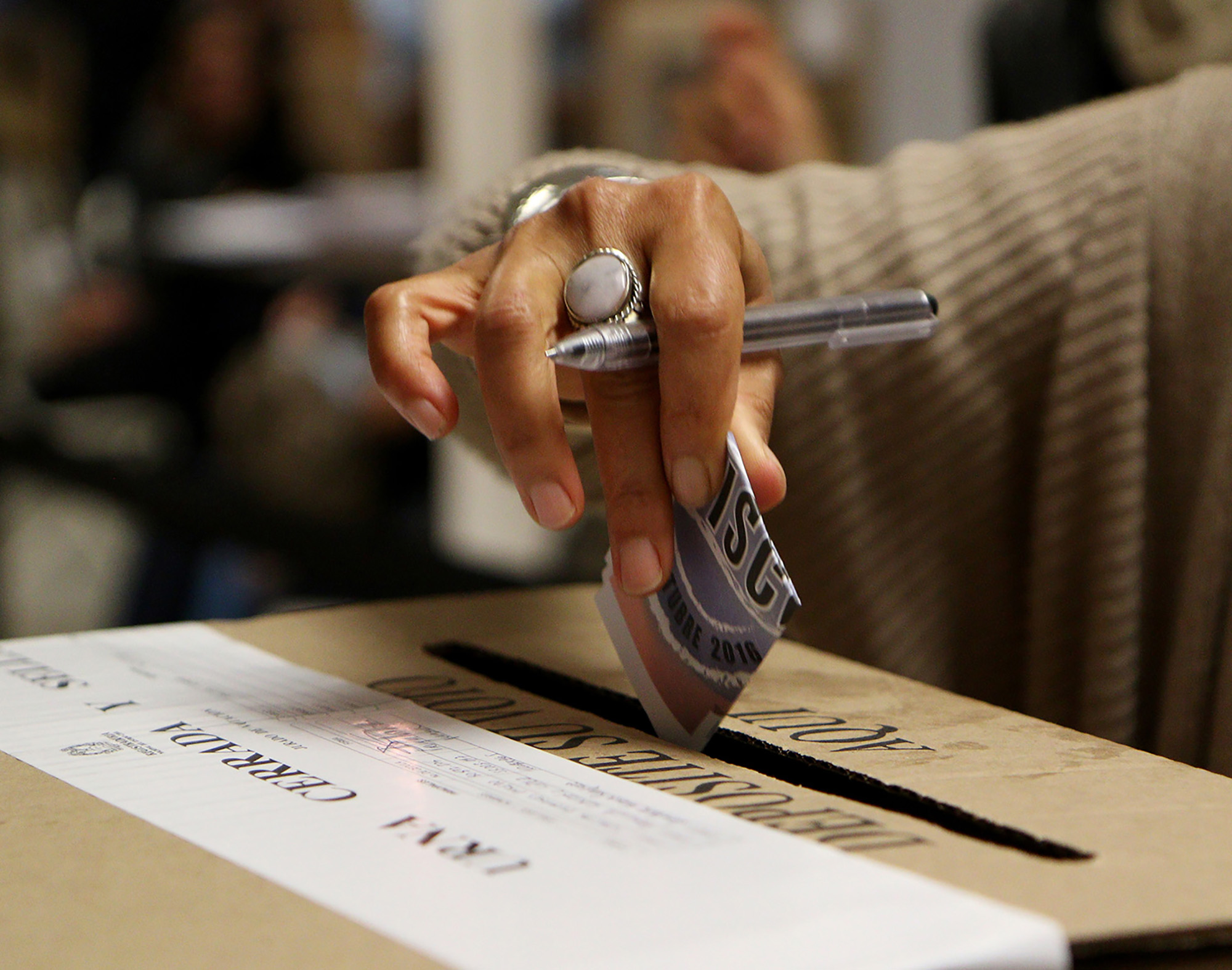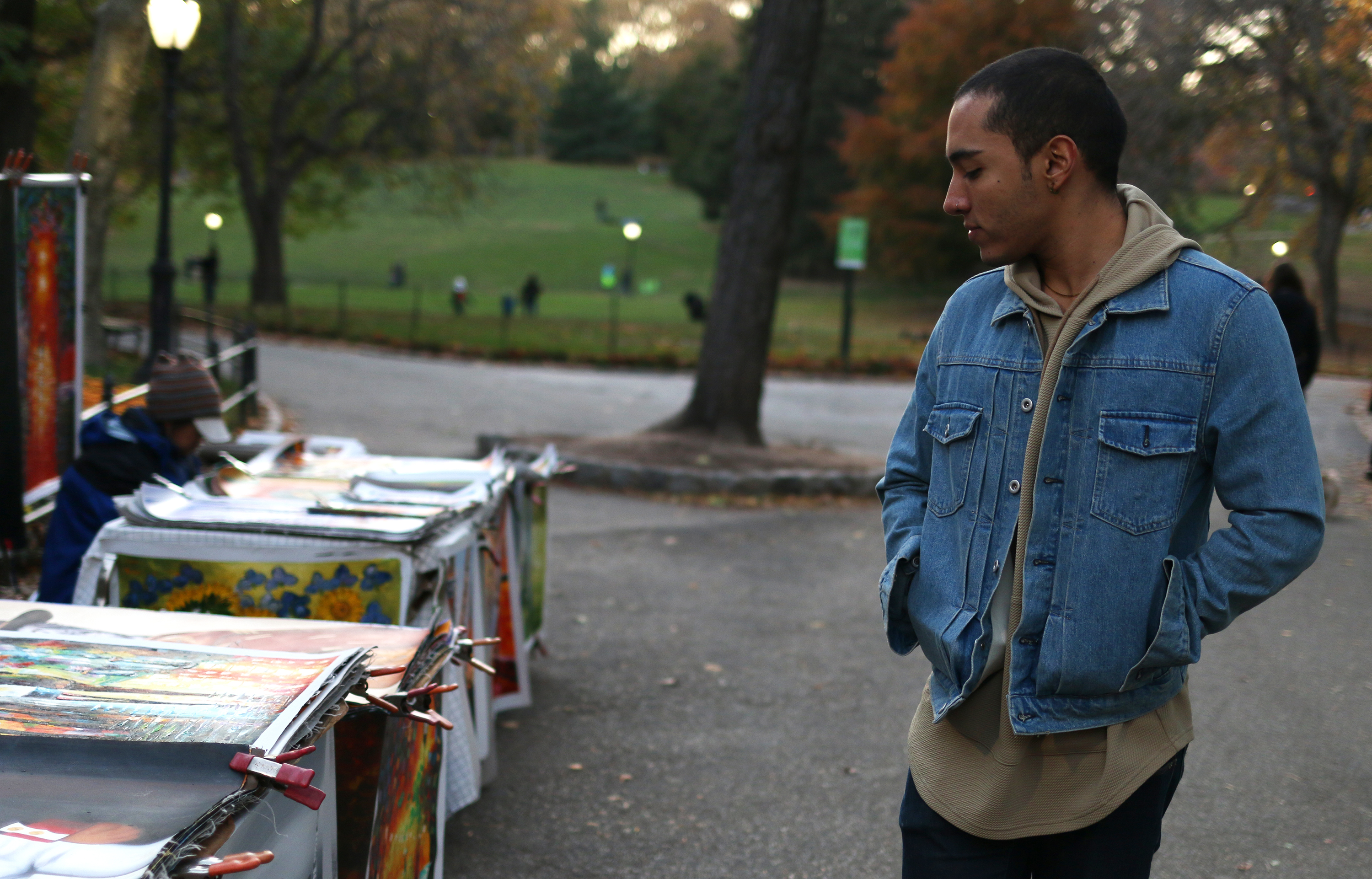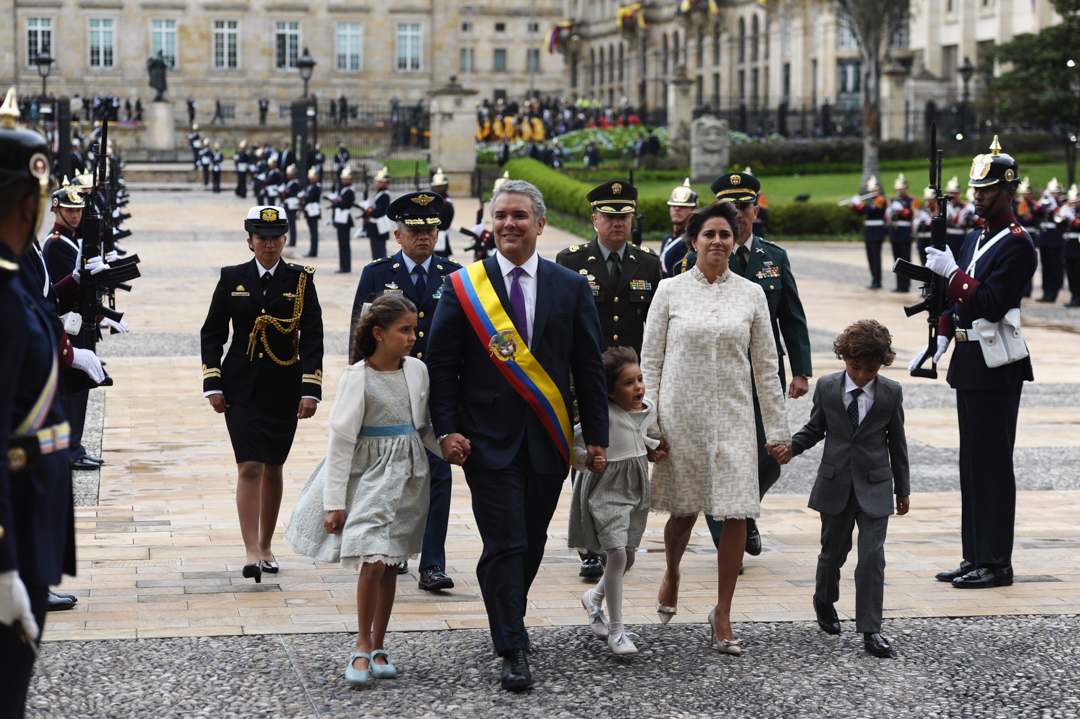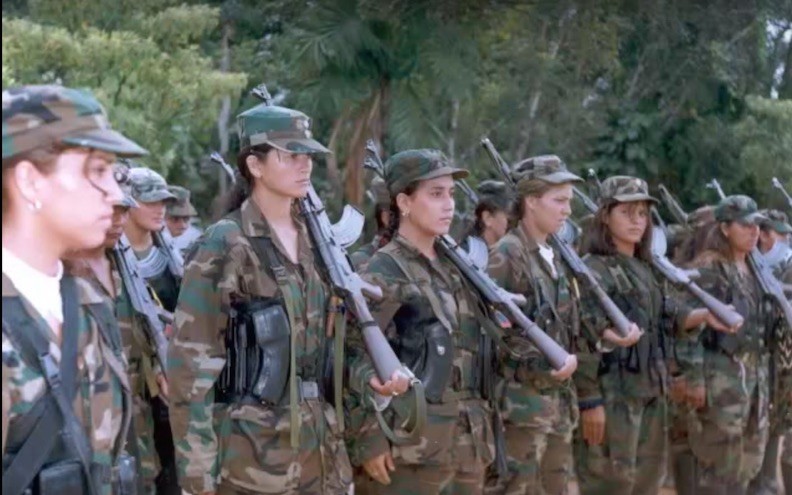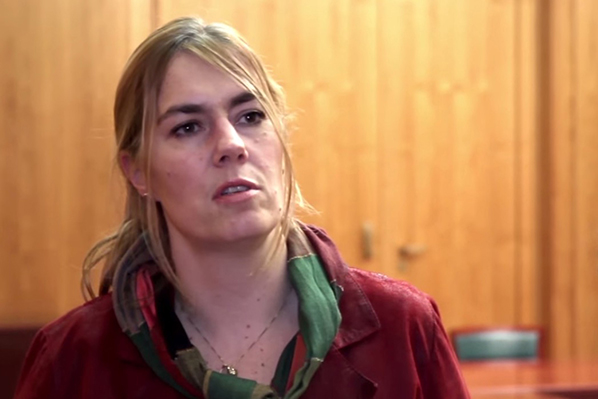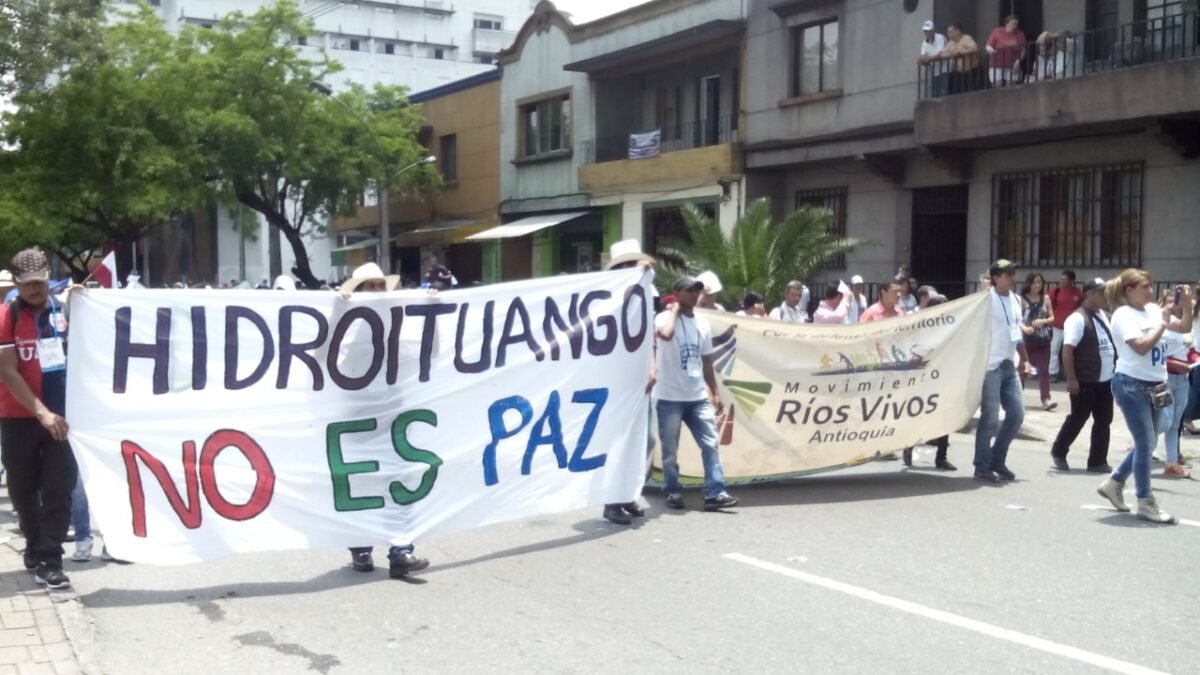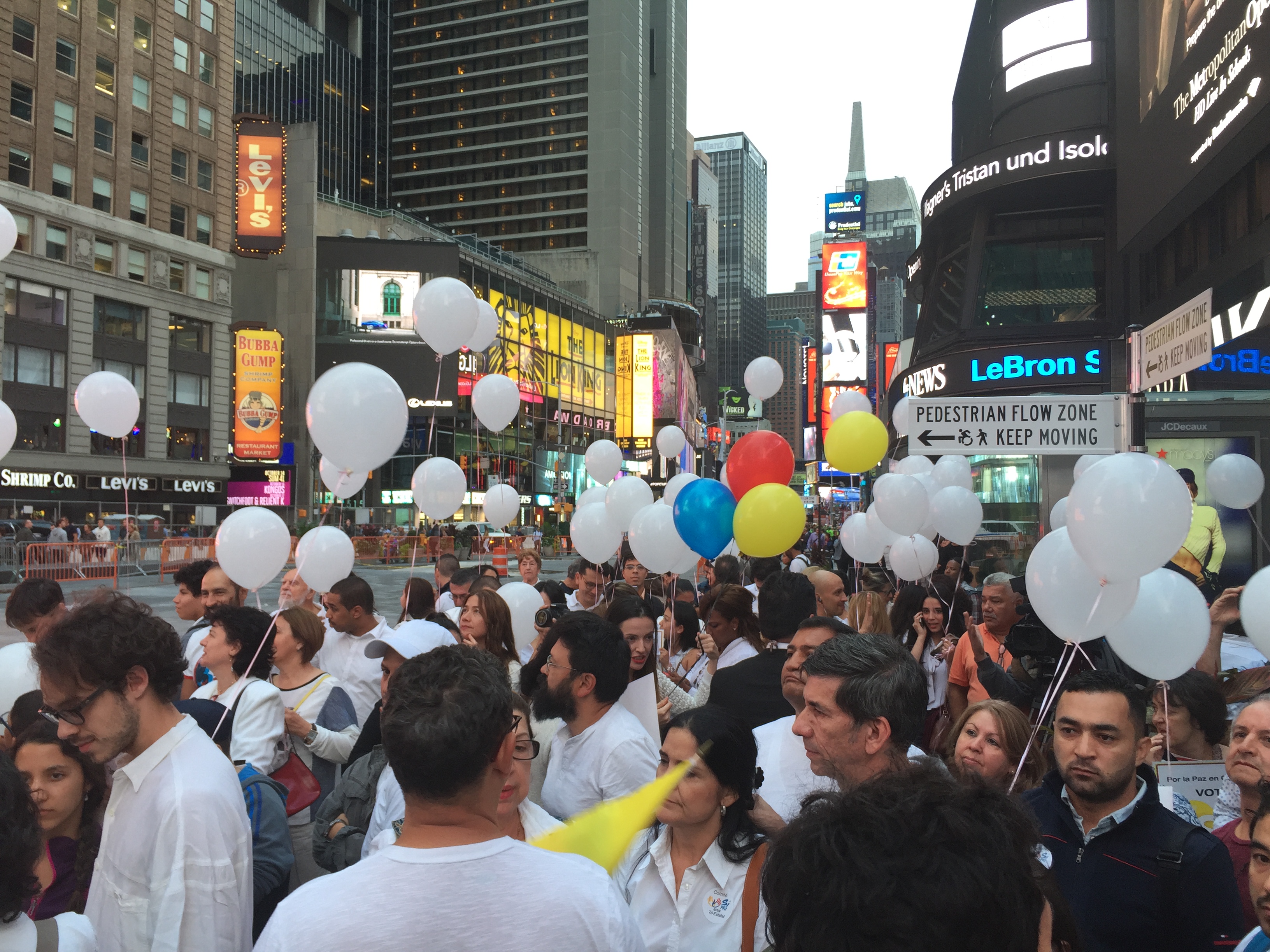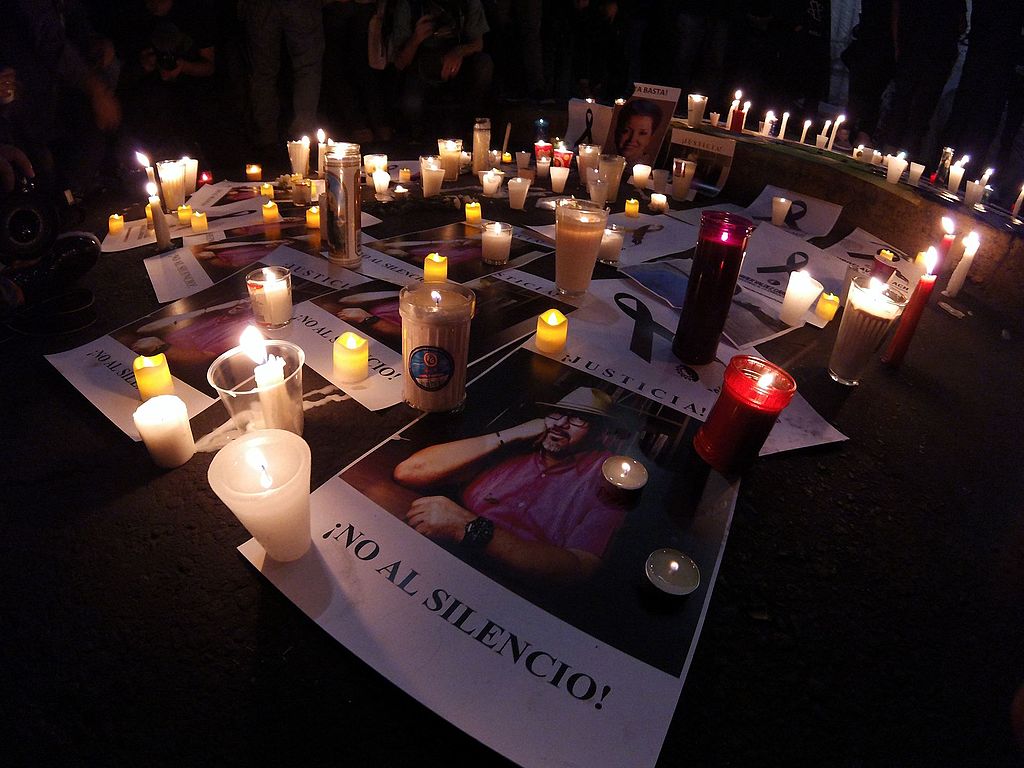
Colombia
Escaping a Homophobic War in Colombia
April 15, 2017 By Monica Espitia
NEW YORK—José Miguel Cañón was walking home one night in the 20 de Julio neighborhood of Bogotá, Colombia, when a motorcycle with two men stopped next to him. One man got off, pushed Cañón against a wall and put a gun to his head. Paralyzed by fear, Cañón stayed quiet, waiting for the attacker to pull the trigger. “If you don’t stop messing with our business, I will send you to your grave,” the man warned.
Cañón, 47, recalled the assailants wore black clothes and had their faces covered with helmets that night in 2012. He couldn’t identify them. But he said he is sure they were members of “Bloque Capital,” a spinoff of a right-wing paramilitary group that did not disband after its leaders struck a deal with the government in the last decade.
The attack was part of a largely invisible war against gay, bisexual and transgender Colombians within the country’s decades-long brutal conflict, which has left more than 220,000 dead and almost 7 millions displaced. Their plight is only now coming to light as violence has ebbed and key parties to the conflict are making a concerted effort to acknowledge the abuses they have committed.
On the surface, Colombia appears to be at the vanguard of the gay rights movement, having extended legal rights to same-sex couples and transgender people. In 2007, the court recognized that LGBT Colombians had a right to own and inherit property. Less than two years later, it granted residency and nationality rights, housing subsidies and protection from domestic violence to same-sex couples. Last year, the court has also legalized equal marriage and adoption. This month, judges also ruled in favor of a man in the city of Barranquilla who was repeatedly harassed by neighbors using homophobic slang against him.
But for millions of Colombians who are LGBT, these rights have been largely meaningless as a result of deep-rooted prejudice that often results in violence. Cañón, an LGBT activist for the Green Alliance Party, was used to constant insults and bullying from “Bloque Capital” since he started his activism job in 2007. But he had never been threatened at gunpoint before, he said. “Bloque Capital”, like other paramilitary organizations, wanted to cleanse society of homosexuality.
Despite the warning, he continued working as an activist in his community, counseling other members of the LGBT community, organizing events to create awareness about LGBT issues and dissuading teenagers from joining “Bloque Capital.” But after four months of constant threatening calls to his family’s house, he flew to the United States to seek political asylum in March 2013.
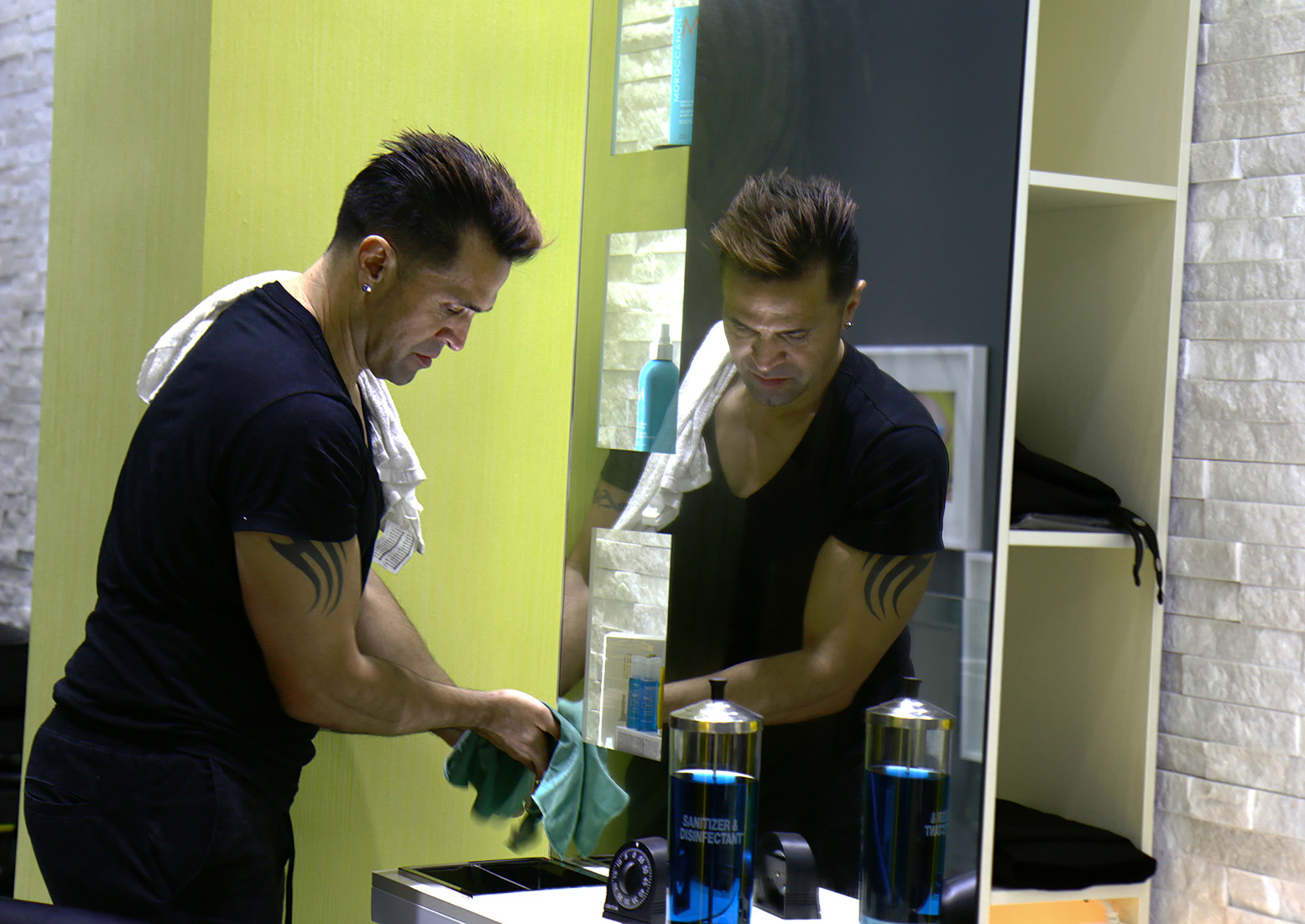
Sometimes Cañón has to work from 10 a.m. to 10 p.m. But he says that he doesn’t mind the long hours because he doesn’t have a family waiting for him at home. (Image: Monica Espitia)
Cañón is not alone. Colombia has the world’s third highest number of U.S. asylum seekers, according to the Department of Homeland Security, applying under the category of “member of a particular social group.” Many are being persecuted on the basis of sexual orientation and gender identity.
Beyond facing the discrimination of a largely homophobic society, LGBT Colombians have also been actively persecuted by armed groups involved in Colombia’s 52-year-long conflict. Gay, bisexual and transgender people are four times more likely than the rest of the population to be threatened and abused by both legal and illegal armed forces, according to the Victims’ Unit, a state institution that keeps track of the armed conflict victims.
The disproportionate persecution they have faced was recognized in the peace accord that the government and the Revolutionary Armed Forces of Colombia (FARC), the nation’s largest guerrilla group, signed last September. But their recognition sparked controversy among right wing groups, Catholics and Christians, who voted against the peace accord the following month.
“Many of the people who voted ‘No’ think that the accord was trying to promote homosexuality,” said Luis Fernández, an armed conflict researcher at Colombia Diversa, the biggest LGBT organization in the country. “Some people even went as far as saying that the government wanted to impose a homosexual dictatorship, whatever that means.”
However, Fernández explained that the document simply promoted the implementation of institutions that would protect the rights of LGBT Colombians, among other marginalized and discriminated minorities.
But, according to him, many voters opposed the inclusion of LGBT rights in the document because Colombia is still a very conservative society and the majority of Colombians ignore the scope of abuses that the LGBT population has endured during the conflict.
Gay, bisexual and transgender Colombians have faced displacement, threats, sexual abuse, torture and homicide, according to a 2015 report by the Center of Historic Memory, one of the few organizations that has researched the subject.
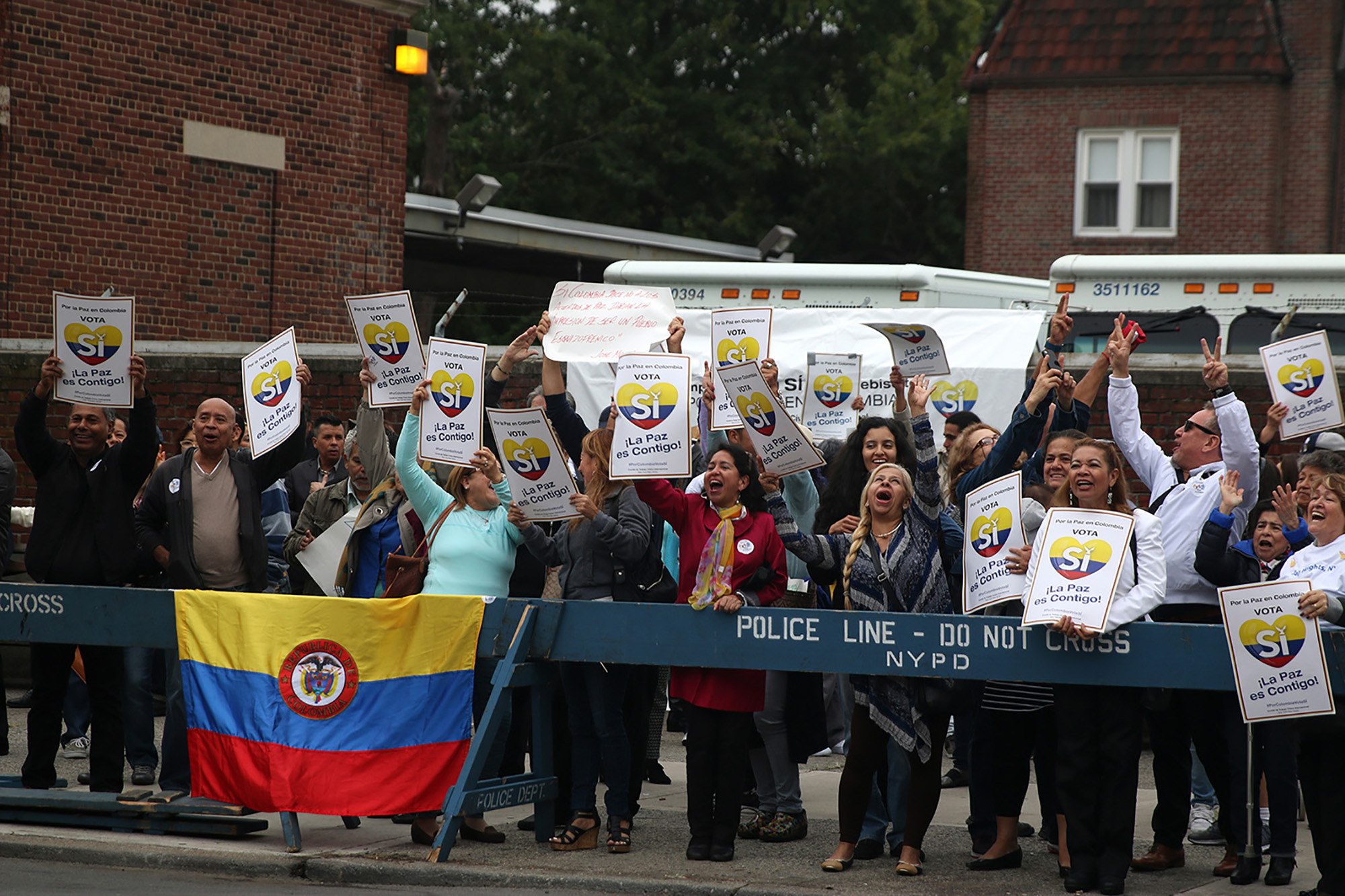
Supporters of the “Yes” vote chanting: “We want peace, no more war,” during a verbal battle against “No” voters in Jackson Heights on referendum day. (Image: Monica Espitia)
Paramilitary Abuse
Paramilitary groups, formed to counter the FARC and other left-wing guerrillas, have been responsible for the most brutal crimes against LGBT Colombians, the report shows.
One of the most emblematic cases of paramilitary abuse happened in San Onofre, a small town in Sucre, a northern state. Gay men and a few transgender women were forced to participate in a boxing competition as a form of public humiliation, Fernández said.
The idea, Fernández explained, was to force these men to “bring out their masculinity” through the use of violence and physical domination—traits traditionally associated with manhood.
Fernando, a 31-year-old gay man who was born and raised in San Onofre, was forced twice to participate in these competitions.
“They told us that it was in our best interest to go. That they would not be responsible for what would happened to us if we didn’t,” he said. “Who is going to say no under those circumstances?”
Fernando said that in one of the competitions the paramilitary members forced him to fight against his best friend. He said that they were trying not to hurt each other, but the militants kept telling them that the consequences of not fighting would be much worse than punching each other.
Militants in San Onofre exercised controlled over the LGBT population in other ways as well. Following a common practice among paramilitary groups around the country, they distributed pamphlets that promised to cleanse the town from “undesired members of society,” including drug addicts, criminals and members of the LGBT community, Fernando said.
Although the pamphlets were deeply disturbing, it wasn’t until he was personally threatened by one of the paramilitary fighters, that Fernando decided to move to Medellín, the second biggest city in Colombia.
“He told me that if I was alive to go to bed that night, he would make sure I wasn’t alive to wake up the next morning,” Fernando said. “I talked to my parents that day and, with a lot of pain in my heart, I decided to move away. I knew it would break their hearts to watch me leave, but I also knew it would be less painful than watching me get killed.”
Army and Police Abuse
Military and police forces have also been responsible for violations against LGBT Colombians. Raids, arbitrary detentions, torture, sexual harassment and expulsion from public places are the most common abuses. But threats and murders targeting people who denounce these violations have also been reported, according to the Center of Historic Memory Investigation.
Many of the testimonies in this investigation also denounce cases of “social cleansing” committed by the police and the military forces, sometimes in collaboration with paramilitary groups.
There have been more than 320 cases of personal injury and arbitrary detention by the police between 2012 and 2016. But investigators believe that threats, verbal aggressions and other intimidating acts often go unreported, a Colombia Diversa Report shows.
Cañón remembers several bad experiences with police officers. They often stopped him to ask for documents after leaving gay bars in Bogotá. He was detained for several hours for no good reason a couple of times, he said. But his worst experience came when he went to a police station to inquire about a friend who had been detained after a fight with his partner.
“All I wanted to know was if my friend needed anything, but the officer treated me in a very nasty way,” he said. “He told me that I better leave if I didn’t want to end up in a cell like my friend. I know he was treating me like that because he noticed I was gay because he called me a ‘maricón’,” a slur for gay men.
Only one out of three abuses like the ones Cañón experienced are reported. The victims either fear retaliation or think that the police won’t do anything, according to the Colombia Diversa Investigation.
Another problem is that those who report these crimes are often called to testify without much warning, making it difficult for them to show up on time at the police station. Once they have missed the appointments, the cases are closed and archived without their testimony, according to the Center of Historic Memory.
But beyond the flaws in the police system of investigation, there is a deeper issue. The National Code of Police Behavior has not been updated since 1970, when homosexual relations were still illegal in the country. Under this code of conduct, a kiss between two people of the same sex could be interpreted as an illegal “obscene act” that could lead to prosecution, the Center of Historic Memory Report shows.
Additionally, former military members quoted in the report explained that torture, arrests and discharges were the norm when a soldier was suspected of being gay.
A common form of punishment for male soldiers caught having sex with men was the “baño de María,” in which the soldier is forced to bend over with his pants down while all the members of his platoon hit him in the rear with a shoe until he starts bleeding. At the end of the hazing ritual, the commander pours water with salt over him to increase the pain.
These punishments were carried out in front of every soldier in the training camp because, aside from humiliating and degrading the soldier, they were intended as a warning for all troops.
Repressive practices like the “baño de María” were allowed by the authorities until 1999, when the Colombian Constitutional Court ruled that sexual orientation was a fundamental part of the right to self-expression and therefore could no longer be forbidden in the military and the police.
Despite this ruling, homophobia is still widespread within these institutions. Admiral Roberto García Márquez, appointed ambassador in the Dominican Republic, was quoted in the Colombian news site Kienyke.com saying that he would use all legal avenues to try to discharge homosexual members in his ranks because “that behavior” is not accepted in the navy.
FARC Abuse
But the paramilitary groups, the army and the police are not the only parties in the conflict to have committed acts of violence against LGBT Colombians. There is also evidence of abuses by the FARC.
Perhaps the most distinctive case took place in Vista Hermosa, one of the five municipalities included in the demilitarized zone that the government and the FARC agreed on as part of a failed peace process between 1998 and 2002.
FARC commanders discovered in 2001 that some of their fighters and affiliates were having sex with Vista Hermosa men. They forced all those involved to write a comprehensive list of all their sexual partners, outed them to their families and displaced them from the demilitarized zone where the peace negotiations were taking place.
Because LGBT people are stigmatized as likely carriers of HIV, the FARC also forced all men and women older than 12 to get tested for the virus. Those who tested positive, the majority of whom were LGBT, were forced to leave the demilitarized zone.
Though there is no evidence of threatening pamphlets distributed by the FARC, the guerrilla group has used other methods to express its rejection of LGBT people. For instance, it has often forcefully displaced gay men and transgender women because they are seen as weak and feminine and therefore useless as potential fighters. But in some cases, they are allowed to stay in exchange for sexual favors or to work as collaborators planning kidnappings, growing coca and committing extortions, the Center of Historic Memory Report shows.
Although homosexuality is explicitly prohibited in the ranks of the FARC, lesbian women have been often forced to enlist because they are perceived as tough and masculine — traits the FARC looks for in its soldiers. But once they are part of the guerrilla group they are not allowed to acknowledge their sexual orientation, Fernández said.
LGBT Victimization: Under Reported
Despite efforts by public and private organizations to collect accurate data on LGBT victims of the armed conflict, it is impossible to know how many there are.
The Victims’ Unit has registered close to 1,800. But this numbers only covers the last four years because prior to 2012, the unit’s form didn’t take into account the sexual orientation or gender identity of the victims.
Another shortcoming of record keeping is that, as with police abuse, the majority of victims don’t report the crime either out of fear or because violence has become a normal part of their lives, Fernández said.
Those who do testify often face public employees with prejudiced views. In extreme cases, they have refused to take the declaration citing personal or religious beliefs, which is particularly common with transgender victims, the Center of Historic Memory Report shows.
Additionally, the National Protection Unit, the public organization in charge of protecting vulnerable populations, doesn’t recognize LGBT people as a group needing special support. Groups that do enjoy the protection of the unit include journalists, human rights activists and indigenous people.
The Peace Accord and LGBT Rights
The peace accord signed in September explicitly recognized that LGBT people have been victimized throughout the conflict. But what Colombians weren’t expecting was that this recognition would spark a fierce debate over morality, the constitution and the country’s religious traditions.
Colombian lawyer Mauricio Albarracín said the battle over the recognition of LGBT rights escalated in August, when thousands of Colombians marched to demand the resignation of former education minister Gina Parody, who is openly gay. The protest was inspired by the publication of a teaching handbook that promoted tolerance for sexual diversity in schools and other education institutions.
Conservative groups falsely charged that some of the passages promoted “gender ideology,” or an encouragement that students experiment with same-sex relations and gender fluidity. Adding to the controversy, photos from a Belgian porn magazine were distributed on social media and portrayed as being excerpts from the handbook.
After months of intense debate over whether supporting LGBT rights exposed Colombian children to the so-called “gender ideology,” Parody resigned as education minister on October 4, just two days after Colombians rejected the peace accord. On August 30, Parody had been temporarily removed from her position to work as the campaign manager for the “Yes” vote, a decision that the opposition used to prove that the government was trying to force homosexuality on Colombian people through the peace agreement.
In the weeks following the plebiscite, president Santos, government representatives and FARC negotiators met with the different groups that voted against the accord to hear their concerns and suggestions.
Among them were religious leaders who explained that they disapproved the inclusion of LGBT rights in the agreement because it went against their beliefs. They also demanded that the new accord recognize people discriminated on the basis of religion.
On October 23 and 24, Liberal Party Senator Viviane Morales, a devout Christian, and her husband Carlos Alonso Lucio, an Evangelical leader, had a private meeting with FARC negotiators. While neither Morales nor Lucio had the authority to negotiate on behalf of the government, they claimed to have reached an agreement with the FARC on gender issues.
The first point they clarified, Morales said, was that the new accord should focus on the discrimination suffered by women, without recognizing gay, bisexual and transgender Colombians as special victims of the conflict.
Echoing the sentiments of religious leaders, Morales also said that the presence of LGBT rights in the new accord should not go against the Constitutional definition of “family” as a “free decision of a man and a woman to enter into marriage.”
But Albarracín, who also met with FARC negotiators after the plebiscite, explained that Morales’s interpretation of the concept of “family” is too narrow because the Constitution doesn’t state that families must consist of a man and a woman. He also said that when he met with the FARC, they denied having come to an agreement with Morales and Lucio. They simply promised to bring the concerns of the senator and her husband to the negotiating table.
After reviewing the positions of dissatisfied groups, the government and the FARC announced a new accord on November 13. The new document was signed by President Santos and FARC leader Rodrigo Londoño, alias Timochenko, on November 24 and approved by Congress less than a week later.
The new document is better than the one signed in September, Albarracín said, because it is more inclusive. While it recognizes the family as the fundamental pillar of society, it also promotes fighting the stigmatization of vulnerable groups including Afro-Colombians, indigenous populations, people with disabilities, members of the LGBT community and religious minorities.
The new accord also eliminated controversial language. The word “sexism,” for instance, was replaced by “discrimination against women.” “Gender identity” and “sexual orientation,” on the other hand, were changed to “LGBT population.” But the substance remained the same on issues related to gender, Albarracín said.
The most important part of the accord, he said, is that it states that no social group has the right to use the 310-page document as a platform to discriminate or limit the rights of other social groups.
“What I see is that the new accord is even better for the rights of the LGBT population,” Albarracín said. “Instead of eliminating protections, it added safeguards to prevent the violation of the democratic system that we have in place.”
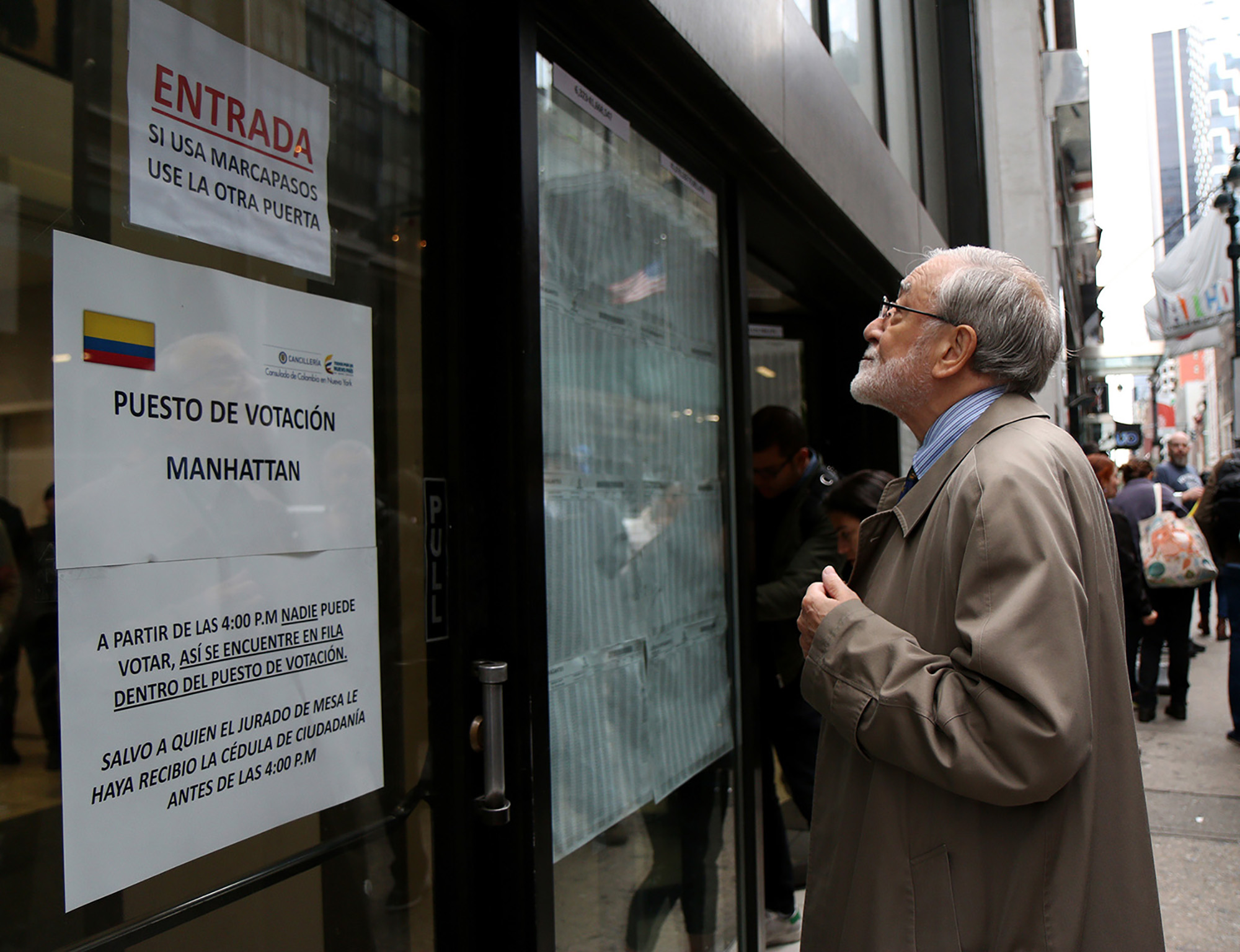
A Colombian man looks at a list of assigned voting tables at the Colombian Consulate in Manhattan on referendum day. (Image: Monica Espitia)
Even though the new agreement is more inclusive and less open to misunderstandings, many religious leaders and conservative Colombians remain opposed to it, arguing that the changes were merely ornamental.
Two of the leading critics of the deal are Álvaro Uribe, a former president who is now senator, and Alejandro Ordoñez, the former inspector general, who was dismissed earlier this year on corruption charges. Ordoñez is also a possible presidential candidate for the 2018 elections.
Uribe and Ordoñez have supported Morales’s proposal to hold a referendum to let Colombians decide if same-sex couples should be allowed to adopt, even though the Constitutional Court extended that right last year. Ordoñez explained his reasons to support the referendum proposal during a quick visit to New York City in September.
“The agenda that the LGBT movement is promoting cannot be imposed on the Colombian people. It goes against our Constitution, but most importantly it goes against our traditions,” Ordoñez said. “The Constitutional Court has imposed this agenda on us and I don’t think that is right, which is why Senator Morales’s proposal appeals to me.”
The issue at the heart of the debate, as Ordoñez hinted, is that a vast number of Colombians don’t agree with progressive rulings on LGBT issues by the Constitutional Court in the last decade.
Morales’s proposal has collected more than 2 million signatures and is close to being approved by Congress. Considering the backlash Parody received and the rejection to the peace accord, such a referendum would probably not favor same-sex couples that want to adopt.
Morales has insisted that her intention is to protect the “family” and save Colombian children from the “gender ideology” that the government and the Constitutional Court are trying to impose. But for LGBT rights advocates like Green Party Senator Claudia López, the referendum proposal is just a political strategy to legitimize discrimination. López, who is openly lesbian, is also one of the possible candidates for the 2018 presidential election.
LGBT Colombians Seek Asylum in the U.S.
The current debate underscores why Colombia is still far from being a safe haven for gay and transgender people. Despite the legal protections extended by the Constitutional Court, they are still constantly exposed to intimidation, threats and abuse, Albarracín said.
“The legal country and the actual country are two completely different things. There is a lot that still needs to be done to make sure that the rights that have been recognized in recent years are experienced in everyday life,” he said.
Although LGBT Colombians have been fleeing the country for decades, there has been a significant surge in the number of U.S. asylum applications in recent years, Brooklyn-based immigration lawyer Hernán Posada said. He is currently representing more than 10 applicants who filed petitions in the last year. Between 2000 and 2015, he handled roughly 20 cases.
Posada said this increase is the result of recent waves of homophobic violence across the country. The number of attacks against LGBT individuals by armed organizations has skyrocketed since 2007, the Center of Historic Memory Investigation shows. Posada said that this trend toward more violence could be a form of retaliation against the Constitutional Court rulings.
Ironically, Colombia is perceived as an inclusive and accepting country because of these rulings, which is making it increasingly more difficult for asylum applicants to demonstrate that it is unsafe for them to return, immigration lawyer Luis Mancheno said.
Another challenge, Mancheno added, is that asylum applicants have to demonstrate they fear persecution across the country. Judges often assume that because Colombia is a big country, victims could simply move to more liberal urban centers, he said.
Although it is true that many people in rural and isolated areas are homophobic—sometimes even collaborating with paramilitary groups to displace LGBT individuals—that doesn’t mean that people in cities are LGBT-friendly, Posada said.
“It doesn’t matter where in the country [LGBT people] are, they are still going to be victimized,” he said. “Colombian society as a whole is very patriarchal and people see them as the scum of humanity, as the cause of all evil.”
Performing artist Marlon Reina, 29, experienced firsthand that not even major cities are safe for gay men like him. He was born and raised in Cali, the third biggest city in the country, where he was sexually harassed throughout his childhood for being gay. When he turned 17, he moved to Bogotá hoping to start his acting career.
He thought the capital would be a better fit for him because it is more liberal than Cali, he said. But he was proven wrong. He was robbed and gang raped in the outskirts of Bogotá when he was 21. He said his four attackers told him that they “were going to break his anus for being gay.” Reina was abandoned in a remote area and had to walk for hours through narrow roads and dark alleys while in complete shock, until he finally made it home, he said.
“I didn’t go to the police out of shame,” he said. “My answer to this abuse was to stay quiet, to suck it up.”
Three years later, Marlon was robbed and verbally abused once again. He took a taxi to go home after a night out at Cavú, one of the most popular gay bars in Bogotá. When he was about to get out of the cab in front of his building, two men opened the door and sat next to him. The taxi driver drove away while the two men took Marlon’s cellphone and credit card. But the robbers soon realized that he only had 20,000 pesos (about $7) in his bank account and threatened to stab him. He said the only reason they didn’t hurt him was because the taxi driver convinced them to let him go.
This time, Marlon went straight to the police to file a report. But when he got to the station the officers told him that he had it coming for hanging out at gay bars, he said.
Like Cañón, Marlon also moved to New York City hoping to escape from his painful past in Colombia. He has been fighting for asylum since May 2014. But due to the vast number of pending asylum cases—620,000, according to American Immigration Council numbers—his case, like Cañón´s, is not likely to be resolved anytime soon, Posada said.
Before 2014, asylum cases usually were adjudicated within one or two years. But since nearly 70,000 unaccompanied children from Central America showed up at the U.S.-Mexico border, immigration courts and the asylum system have been overwhelmed.
Officers at the border with Mexico used to determine if new arrivals seeking asylum had credible fear of persecution. But they have been so overworked in the last few years that they have delegated that responsibility to asylum offices all over the country, which has resulted in an overall slowdown of the process, Posada explained.
Applicants currently face an average of three years from the moment their application is filed before an immigration judge interviews them, Posada said. If the official approves the case, it is closed. But if the case is rejected, asylum seekers may appeal, which can take an additional two to three years, he added.
Cañón said that he tries to be patient and keep a positive attitude, but the uncertainty is not always easy to deal with.
“For me, nothing is certain in this country,” he said. “I can’t help to worry about what could happen if they don’t approve my case.”
Cañón said that he loves the city because it has offered him “much more than Colombia ever could.” But he admits that life here is not what he expected. In the time he has been here, he has worked as a dishwasher, waiter, beauty salon assistant and caretaker, lines of work he struggled to get used to considering his background as an activist, he said.
But the biggest challenge for him has been loneliness. He lives in a Jackson Heights apartment with his cat, Nacho, who has become his best friend and only source of solace, he said.
Cañón said that he dreams of finding a partner, somebody he can share his life with. But he is not holding his breath because he says that people here don’t seem interested in getting close to anybody because they are too focused on work and making money. He said that he doesn’t see himself ever living in Colombia again. But not a day goes by when he doesn’t wish he could go see his family, especially his sister, the person he loves the most in the world, he added.
“I wish things got better,” he said. “That God would allow me to go back to my country without having to be afraid for my life, it would be God’s blessing.”
